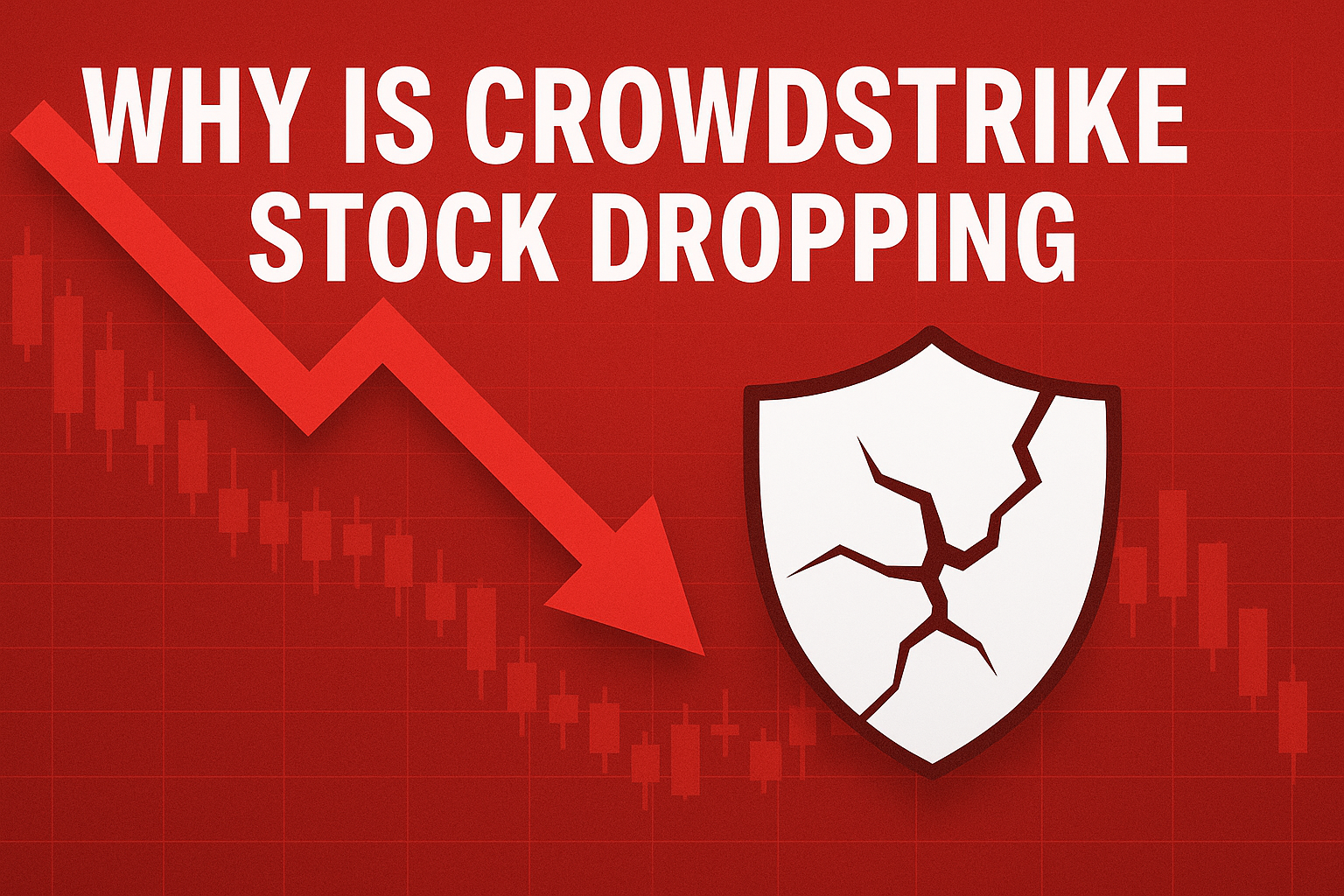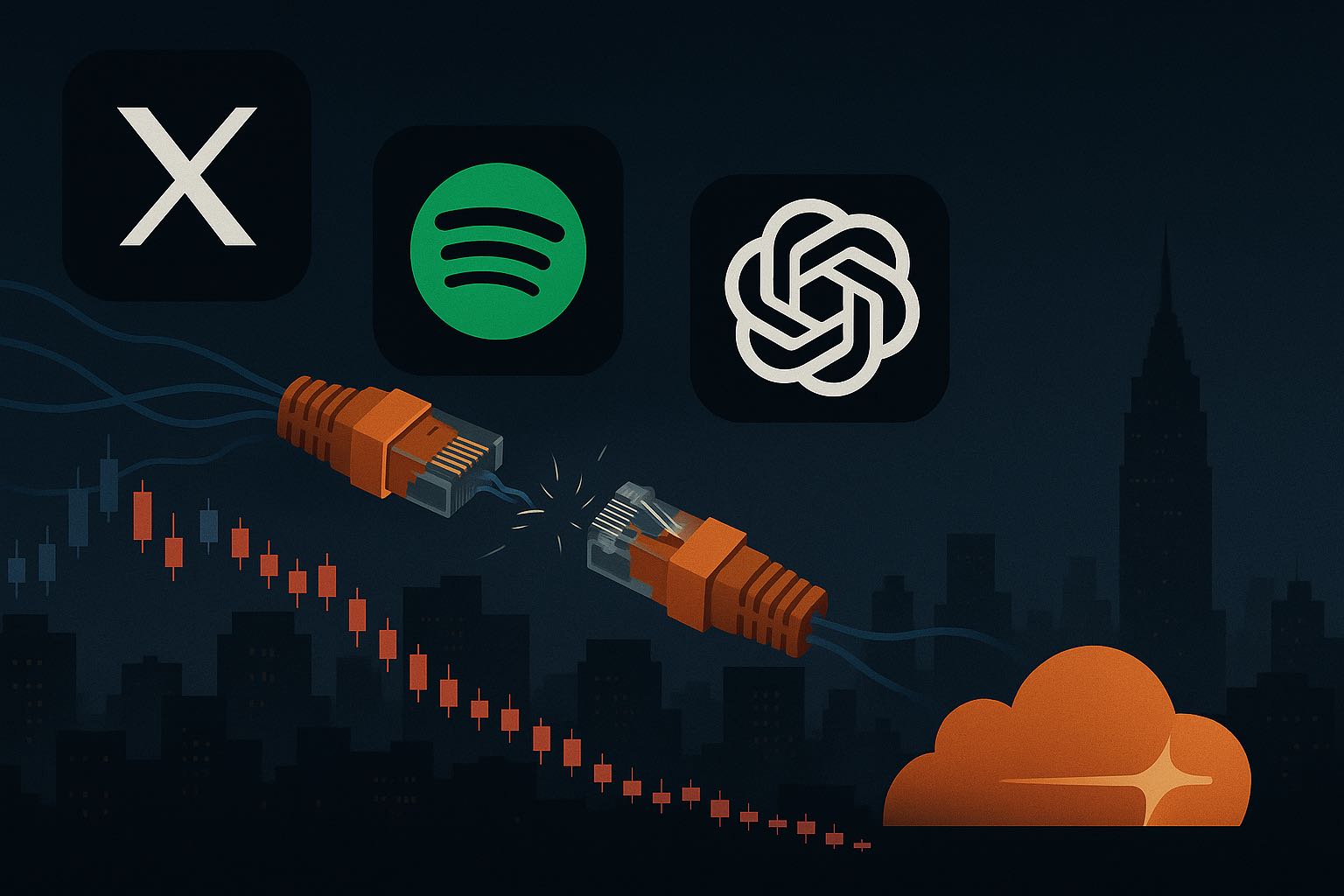CrowdStrike's (NASDAQ: CRWD) stock has been falling recently despite strong earnings due to softer-than-expected revenue guidance, ongoing financial impacts from its 2024 IT outage, elevated valuation concerns, workforce restructuring, and stiff competition.
Although Q2 beat consensus, investors reacted to the cautious outlook for Q3 and lingering fallout from last year's incident.
Below, we explore the five reasons why CrowdStrike's stock is dropping, what investors should watch next and whether investors should buy the dip or stay away.
Why Is CrowdStrike Stock Dropping? Exploring the 5 Key Reasons for the Drop

1. Disappointing Q3 Revenue Guidance Overshadows Q2 Surprise
CrowdStrike's fiscal Q2 2026 outcomes were robust, with revenue surpassing $1.17 billion and adjusted EPS at $0.93, both exceeding forecasts.
However, the real blow came from the Q3 revenue guidance, which ranged from $1.208 to $1.218 billion, falling short of the $1.228 billion consensus.
This cautious outlook reflects the long-term consequences of the 2024 global IT outage, as well as ongoing client retention incentives, which are expected to reduce revenue by $10-$15 million each quarter and cash payments by $51 million. (Reuters)
2. Outage Fallout Continues to Haunt Growth
In July 2024, a defective software update caused a massive outage affecting roughly 8.5 million Windows systems globally, grounding flights, disrupting banking, media, hospitals, and emergency services.
To retain customers, CrowdStrike offered credits and incentives. This customer retention plan now creates an ongoing revenue headwind of approximately $10 to 15 million per quarter, with free-cash-flow impacts already flagged.
3. Valuation Concerns: Is the Stock Topped Out?
Despite posting a near 39% YTD gain, CrowdStrike's valuation is now under intense scrutiny.
Morgan Stanley downgraded its rating from "Overweight" to "Equal Weight," noting that the stock trades at roughly 21 times forward sales, significantly higher than the ~12× multiple usually seen for large-cap software companies.
These high valuations provide scant margin for mistakes, particularly as earnings challenges continue and competition intensifies. The Accumulation/Distribution technical indicator also suggests increased selling pressure.
4. Workforce Restructuring Signals Caution
In May 2025, CrowdStrike announced a workforce reduction of approximately 500 employees, or 5% of its workforce, as part of an efficiency strategy amid a larger trend of AI-related job cutbacks in the technology sector.
Though hiring remains targeted to key areas like engineering, the move reflects a more cautious operational stance in uncertain times.
Combined with costs linked to the IT outage, this restructuring shapes a mixed sentiment backdrop: prudent, but potentially signalling lowered investor confidence in near-term growth.
5. Broader Market and Sector Pressure
CrowdStrike trades within a crowded cybersecurity and tech environment. Even with defensiveness against economic cycles, CRWD has underperformed. On a day when the S&P 500 dropped 0.4%, CrowdStrike fell over 1.2%, and was also down nearly 6% YTD from its 52-week high. (Investors)
Dow Jones futures are affected by mixed sector leadership, and peer valuations in cybersecurity (e.g., Palo Alto Networks, SentinelOne) create sentiment headwinds.
What Should Investors Watch Next Regarding CrowdStrike Stock?
| Time Horizon |
Watch Point |
Why It Matters |
| Short-Term |
Q3 FY26 revenue delivery vs. guidance |
A beat vs. conservative guide could re-stabilize the stock |
|
Credit drag roll-off (~$10–15M/quarter) |
Reducing this drag could improve growth visibility |
| Medium-Term |
ARR growth and margin recovery |
Sustained expansion would validate long-term thesis |
|
Valuation re-rating |
Better execution could justify a higher multiple |
| Long-Term |
Regaining credibility via spotless execution |
Simply delivering as promised can rebuild investor trust |
What Are Investor Perspectives Moving Forward?
Growth-oriented investors may view dips as entry opportunities, as CrowdStrike's long-term thesis (AI-driven security) still holds merit.
Risk-averse investors must remain diligent due to pending operational expenses, elevated multiples, and continuing litigation risks.
Speculative traders may take advantage of volatility, but must closely monitor liquidity and technical indicators.
Frequently Asked Questions
1. Why Is CrowdStrike's Stock Dropping Despite Beating 2025 Q2 Earnings Expectations?
CrowdStrike's Q2 results exceeded forecasts, but the stock fell because its Q3 revenue guidance ( $1.208–$1.218B) missed analyst estimates. Investors reacted negatively to this cautious outlook, suggesting growth may slow in the near term.
2. Did CrowdStrike Layoffs Contribute to the Recent Stock Decline?
Yes. In May 2025, CrowdStrike reduced its workforce by 5% to improve efficiency. While cost-saving, the move raised concerns about slowing demand and internal caution, adding to bearish sentiment.
3. Should Investors Be Worried About Further Drops in CrowdStrike Stock?
Short-term volatility is likely, especially if Q3 results don't exceed revised guidance or if outage-related costs persist longer than expected.
Conclusion
In conclusion, CrowdStrike's recent stock decline isn't due to a lack of strong performance, as its Q2 beat expectations.
However, the forward-looking risk indicators, including poor guidance, structured incentives obscuring future revenue, inflated valuations, and strategy shifts through layoffs, create a more intricate scenario.
Disclaimer: This material is for general information purposes only and is not intended as (and should not be considered to be) financial, investment or other advice on which reliance should be placed. No opinion given in the material constitutes a recommendation by EBC or the author that any particular investment, security, transaction or investment strategy is suitable for any specific person.


























